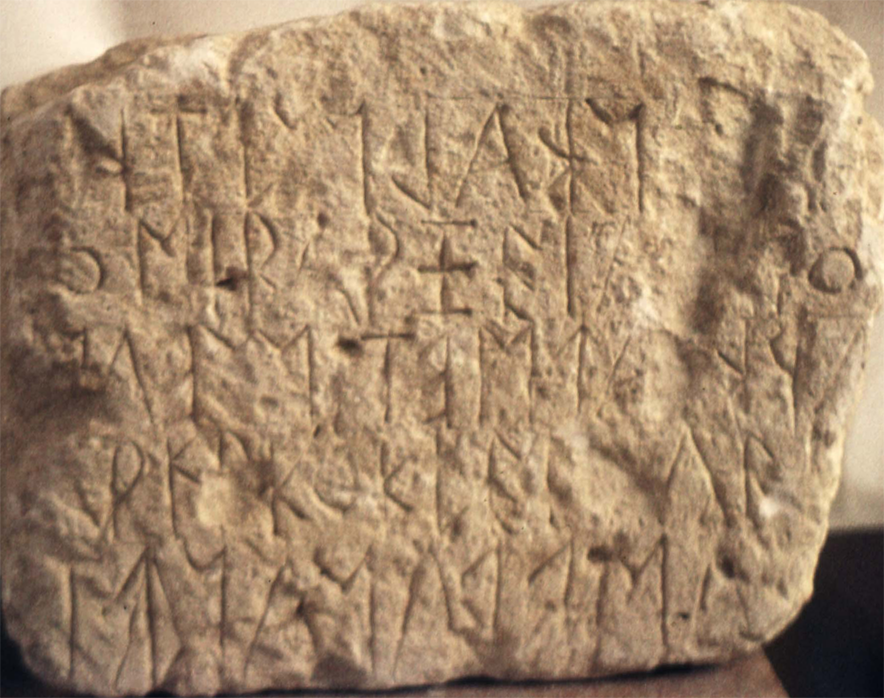Praisos 1 on:
[Wikipedia]
[Google]
[Amazon]

 Praesus or Praisos ( grc, Πραῖσος), also Prasus or Prasos (Πρᾶσος), was a Greek city in ancient Crete.
Praesus or Praisos ( grc, Πραῖσος), also Prasus or Prasos (Πρᾶσος), was a Greek city in ancient Crete.

 Praesus or Praisos ( grc, Πραῖσος), also Prasus or Prasos (Πρᾶσος), was a Greek city in ancient Crete.
Praesus or Praisos ( grc, Πραῖσος), also Prasus or Prasos (Πρᾶσος), was a Greek city in ancient Crete. Strabo
Strabo''Strabo'' (meaning "squinty", as in strabismus) was a term employed by the Romans for anyone whose eyes were distorted or deformed. The father of Pompey was called "Pompeius Strabo". A native of Sicily so clear-sighted that he could see ...
reports that it belonged to the Eteocretes
Eteocretan ( from grc-gre, Ἐτεόκρητες, Eteókrētes, lit. "true Cretans", itself composed from ἐτεός ''eteós'' "true" and Κρής ''Krḗs'' "Cretan") is the pre-Greek language attested in a few alphabetic inscriptions of anc ...
, and contained the temple of the Dictaean Zeus, for Mount Dicte
Dikti or Dicte ( el, Δίκτη) (also Lasithiotika Ori; el, Λασιθιώτικα Όρη "Lasithian Mountains"; anciently, Aigaion oros ( grc, Αἰγαῖον ὄρος) or la, Aegaeum mons) is a mountain range on the east of the island of C ...
was in the territory of Praesus. Strabo reports that Praesus was located between as lying between the promontories Samonium and Chersonesus, at the distance of 60 stadia from the sea, and close to Mount Dicte
Dikti or Dicte ( el, Δίκτη) (also Lasithiotika Ori; el, Λασιθιώτικα Όρη "Lasithian Mountains"; anciently, Aigaion oros ( grc, Αἰγαῖον ὄρος) or la, Aegaeum mons) is a mountain range on the east of the island of C ...
. However, Strabo confuses Praesus with Priansus, when he says it bordered upon the territory of Leben, and was distant 70 stadia from the sea, and 180 from Gortyn.
The site was populated in Neolithic times, and remnants of Minoan and Mycenaean settlements have also been found. The inhabitants of Praesus believed that the Kouretes were children of Athena and Helios
In ancient Greek religion and Greek mythology, mythology, Helios (; grc, , , Sun; Homeric Greek: ) is the deity, god and personification of the Sun (Solar deity). His name is also Latinized as Helius, and he is often given the epithets Hyper ...
. The city was razed by the inhabitants of Hierapytna in 140 BCE, in a war that pitted Gortyn and Hierapytna against Cnossus
Knossos (also Cnossos, both pronounced ; grc, Κνωσός, Knōsós, ; Linear B: ''Ko-no-so'') is the largest Bronze Age archaeological site on Crete and has been called Europe's oldest city.
Settled as early as the Neolithic period, the na ...
and its allies. Praesus was mentioned by Theophrastus in ''On Love'': Leucocomas, the beloved of Euxinthetus, gives his lover the task of bringing his dog back from Praesus to Gortyn. The territory of Praesus extended across the island to either sea. It is said to have been the only place in Crete, with the exception of Polichna
Polichna is a village in the administrative district of Gmina Szastarka, within Kraśnik County, Lublin Voivodeship, in eastern Poland. It lies approximately south of Szastarka, south-east of Kraśnik, and south of the regional capital Lub ...
, that did not take part in the expedition against Camicus in Sicily, in order to avenge the death of Minos
In Greek mythology, Minos (; grc-gre, Μίνως, ) was a King of Crete, son of Zeus and Europa. Every nine years, he made King Aegeus pick seven young boys and seven young girls to be sent to Daedalus's creation, the labyrinth, to be eaten ...
. Agathocles the Babylonian, related that the Praesii were accustomed to sacrifice swine before marriage.
The site of Praesus is located north of the modern village of Nea Praisos (formerly Vaveli), which is located in the east of the island on the peninsula of Sitia. The remains of the city are distributed over three hills and include a partially preserved wall.
References
Populated places in ancient Crete Former populated places in Greece Ancient Greek archaeological sites in Crete {{AncientCrete-geo-stub